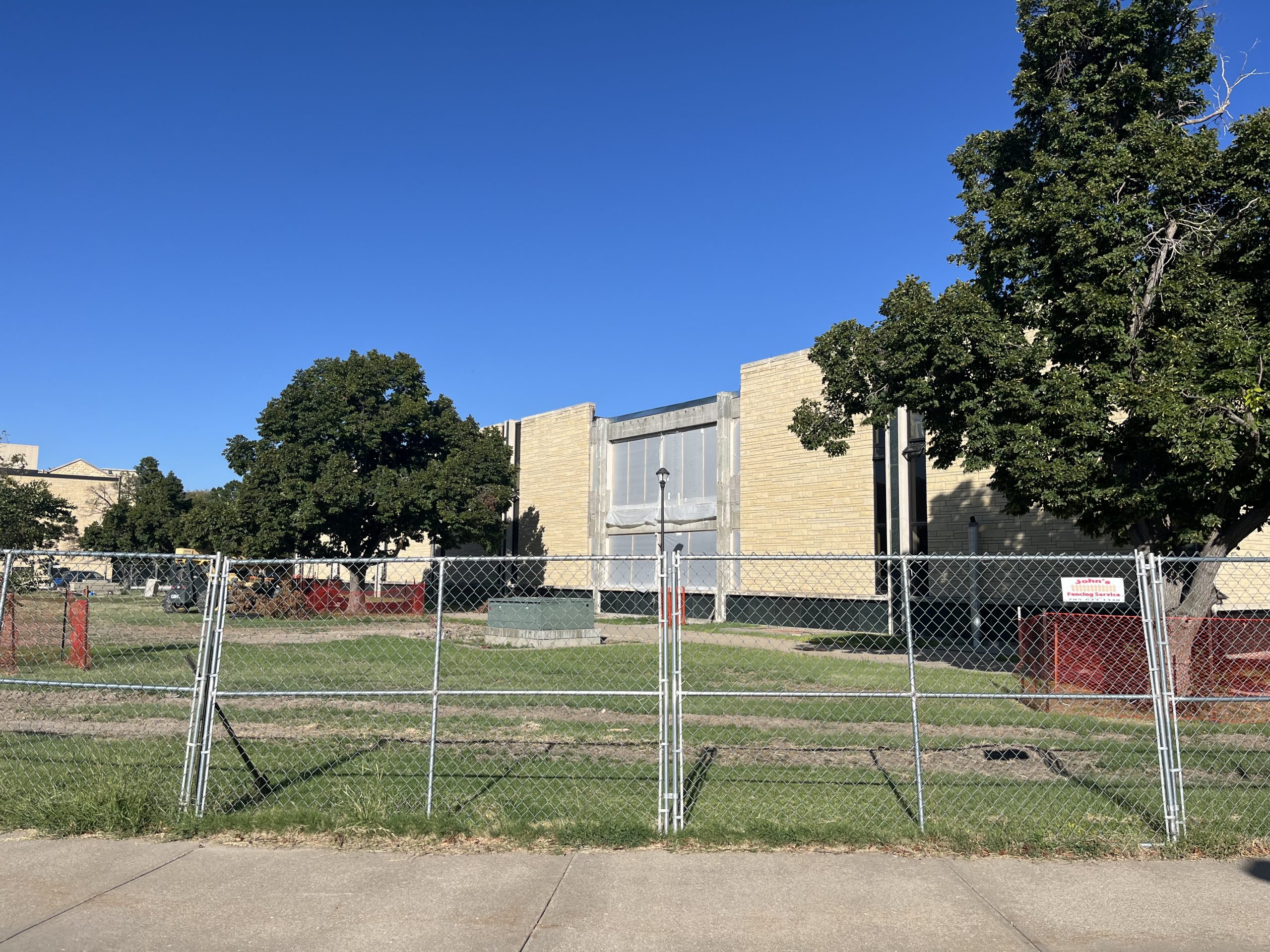By RAEGAN NEUFELD
Tiger Media Network
Although students are unable to study in Forsyth Library due to a complete renovation, its staff and services are still available to provide the usual help.
The library was completely closed during the summer as construction began on the two-year, $27.7 million project. During this time, the PWC construction company began demolition and built a space to house the Welcome Desk, which opened when the semester started. The Welcome Desk and four staff offices are the only parts of the building currently open to students from 7:30 a.m. to 6 p.m. Monday through Friday.
“You’ll be able to check out technology,” Dean of Library Services Ginger Williams said. “You’ll be able to get help with research and you’ll be able to pick up any books that you’ve requested, either our books that we pull from the stacks overnight or interlibrary loans that we’ve borrowed from other buildings.”



Other services previously found in the library moved in January and February. The Makerspace is in Picken Hall 102, the Writing Center is in Rarick Hall 157 and the Honors College is in Picken Hall 123. While four library staff members are now working out of the library, 13 have moved to offices in Custer Hall. Each staff member’s information can be found on the staff page, and a full list of the library’s services and their status can be found on the library webpage.
According to Williams, the renovation will enhance the space and create a more pleasant working environment for students.
“I don’t know if words can accurately convey how much better it will be,” she said. “It will have FHSU colors, it will look modern and it’ll be filled with natural light. The design’s really beautiful. If I were a student today, I think I would love to study in this space and I can absolutely see why they didn’t necessarily want to before.”
FHSU Director of Facilities Planning Dana Cunningham compared the project to the renovation of Sheridan Hall, which originally housed classrooms, a gymnasium and a swimming pool.
“That was a pretty amazing project in itself, converting a basketball coliseum into a performing arts center,” he said. “That was over 30 years ago, so in a generation, this will be the most impressive one.”


In addition to a more welcoming environment, the construction will add a café, a large presentation space and the Institute for New Media Studies – currently located in Malloy Hall 106 – to the library. There will also be more study and meeting spaces, and updates to fundamental parts of the building.
“(The renovation) was really needed because there was a lot of deferred maintenance that kind of reached its limit and needed to be replaced,” Williams said. “Things like the HVAC, the plumbing and the electrical were just not sufficient for a modern building anymore.”
While the building has undergone remodels and updates throughout its 57-year history, nothing on this large of a scale has occurred.
“We’ve done multiple little micro renovations of the building,” Cunningham said. “Some ADA improvements, some elevator modernizations – which we will do again in this project – and some lighting changes made 20 years ago to improve efficiency. Which again, we’ll change and make even more efficient in this project. So there’s been a host of things, but never a comprehensive renovation.”
The project is in the first of two phases. Phase One is focused on the entire lower and second levels and half of the main level, while Phase Two will focus on the second half of the main level. According to Cunningham, demolition is nearly complete for Phase One, and then PWC will begin laying out the building systems and putting up drywall.
“The target is to have Phase One completed next summer,” he said. “Then when they’re able to flip spaces, what is not being worked today will move into its new home and that area will be renovated.”
Cunningham said the project is expected to be done in March of 2026.
In the meantime, the FHSU Foundation is focused on raising $3 million for the project. $19 million of the renovation costs is coming from federal grants, and an additional $6 million will come from university funds. The Foundation was tasked with raising the additional money in a three-year time frame.
“The three years started the day that President (Tisa) Mason and I sat down and she asked if we would take this on,” Foundation President and CEO Jason Williby said. “We’re less than a year into it, but we’re probably approaching a year.”
Mary Hammond, a director of development at the Foundation, is focused solely on raising money for the library construction. She speaks with donors and alumni about giving money to the project and the opportunity to namespaces in the building. According to Williby, other fundraisers at the Foundation have other priorities, but are pushing the library as well.
“We want donors to give back to what they care about most, but we always tell them what the university’s priorities are, and this is top of the list,” he said.
While the task of raising money for the library seemed difficult to Williby at one time, he said that a conversation with former library dean Deborah Ludwig changed his mindset. She reasoned that although a handful of people graduate from the College of Business or play on the basketball team, everybody graduates from the library. That has been the Foundation’s message to donors while raising the money.
“Everybody needs it,” Williby said. “Everybody used it. Everybody has some memory of being in the library, and if you go back to 1967, almost all of our living donors have this unique one thing that they all did and it was go to the library.”
More information and updates can be found on the Forsyth Library Renovation website.


You must be logged in to post a comment.